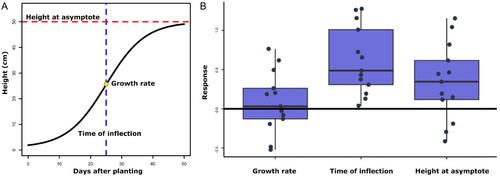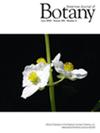Measuring leaf and root functional traits uncovers multidimensionality of plant responses to arbuscular mycorrhizal fungi
Abstract
Premise
While many studies have measured the aboveground responses of plants to mycorrhizal fungi at a single time point, little is known about how plants respond belowground or across time to mycorrhizal symbiosis. By measuring belowground responses and growth over time in many plant species, we create a more complete picture of how mycorrhizal fungi benefit their hosts.
Methods
We grew 26 prairie plant species with and without mycorrhizal fungi and measured 14 functional traits to assess above- and belowground tissue quality and quantity responses and changes in resource allocation. We used function-valued trait (FVT) modeling to characterize changes in species growth rate when colonized.
Results
While aboveground biomass responses were positive, the response of traits belowground were much more variable. Changes in aboveground biomass accounted for 60.8% of the variation in mycorrhizal responses, supporting the use of aboveground biomass response as the primary response trait. Responses belowground were not associated with aboveground responses and accounted for 18.3% of the variation. Growth responses over time were highly variable across species. Interestingly, none of the measured responses were phylogenetically conserved.
Conclusions
Mycorrhizal fungi increase plant growth in most scenarios, but the effects of these fungi belowground and across time are more complicated. This study highlights how differences in plant allocation priorities might affect how they utilize the benefits from mycorrhizal fungi. Identifying and characterizing these differences is a key step to understanding the effects of mycorrhizal mutualisms on whole plant physiology.


 求助内容:
求助内容: 应助结果提醒方式:
应助结果提醒方式:


